Questões de Língua Inglesa da Fundação CESGRANRIO (CESGRANRIO)
Lista completa de Questões de Língua Inglesa da Fundação CESGRANRIO (CESGRANRIO) para resolução totalmente grátis. Selecione os assuntos no filtro de questões e comece a resolver exercícios.
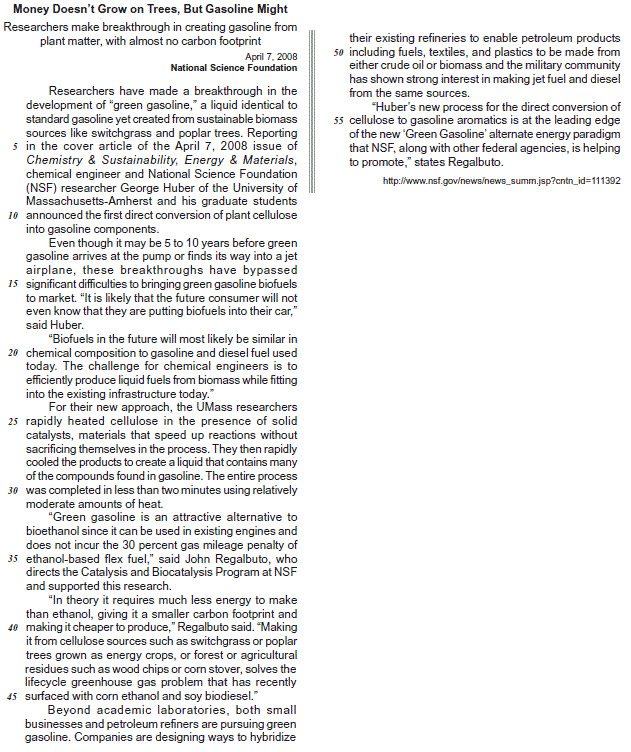 Which alternative contains a correct correspondence of meaning?
Which alternative contains a correct correspondence of meaning?
- A. speed up (line 26) means accelerate.
- B. rapidly (line 27) is the opposite of quickly.
- C. "entire (line 29) could not be replaced by whole.
- D. residues (line 43) and leftovers are antonyms.
- E. surfaced (line 45) and emerged are not synonyms.
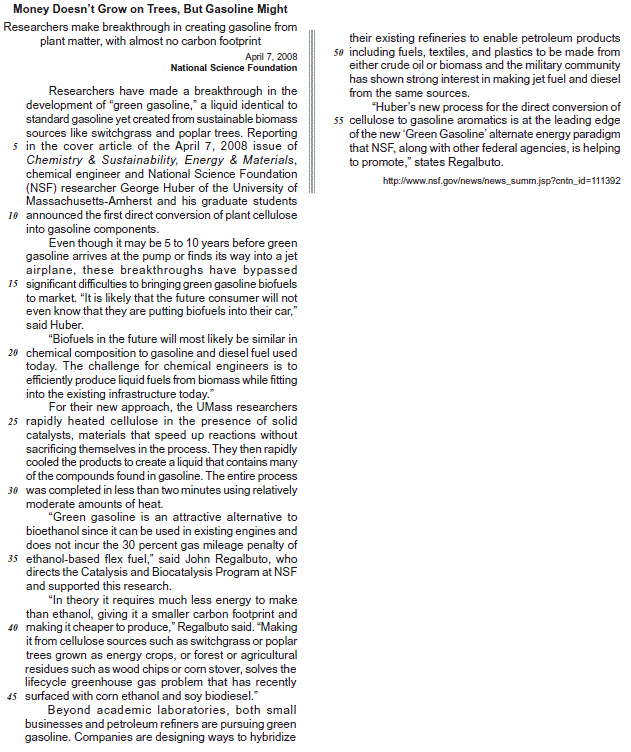 Mark the sentence in which the idea introduced by the word in bold type is correctly described.
Mark the sentence in which the idea introduced by the word in bold type is correctly described.
- A. Even though it may be 5 to 10 years before green gasoline arrives at the pump or finds its way into a jet airplane, (lines 12-14) comparison
- B. while fitting into the existing infrastructure today. (lines 22-23) consequence
- C. then rapidly cooled the products to create a liquid that contains many of the compounds found in gasoline. (lines 27-29) contrast
- D. Green gasoline is an attractive alternative to bioethanol since it can be used in existing engines (lines 32- 33) reason
- E. Making it from cellulose sources such as switchgrass or poplar trees grown as energy crops, (lines 40-42) addition
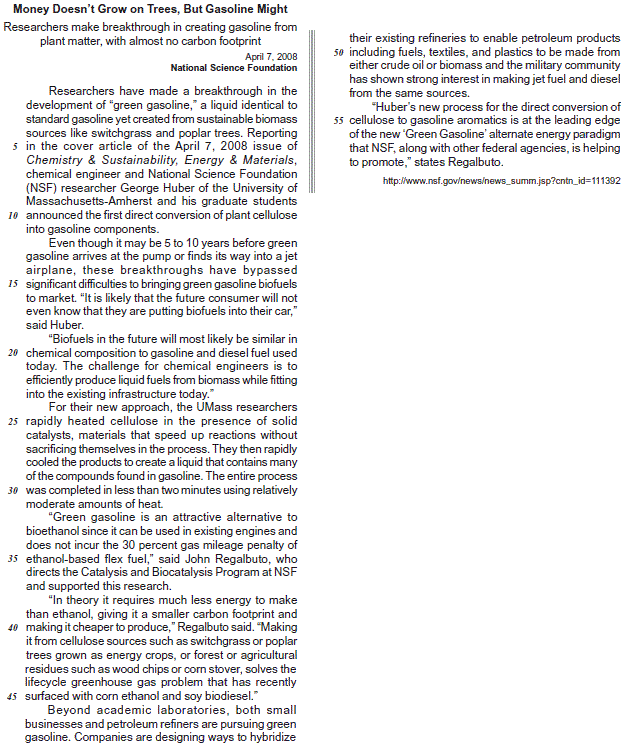 Paragraph 4 (lines 24-31) informs that UMass researchers produce green gasoline by
Paragraph 4 (lines 24-31) informs that UMass researchers produce green gasoline by
- A. creating a hot liquid from standard gasoline adding catalysts.
- B. using cellulose with liquids that catalyze gasoline in less than two minutes.
- C. applying moderate heat to compounds found in gasoline to produce a solid catalyst.
- D. slowly cooling the product of solid catalystic reactions which will produce cellulose.
- E. heating cellulose with specific catalysts and then cooling the product so it transforms into a liquid.
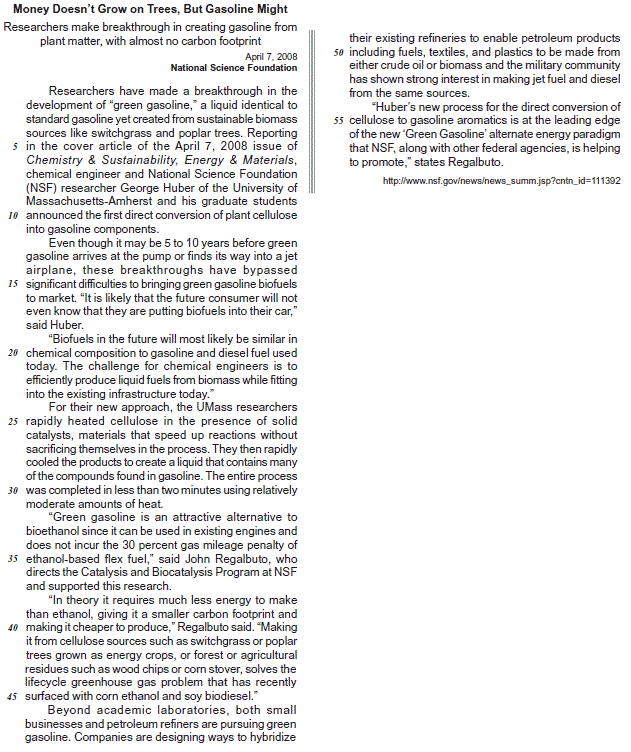 According to this text, it might be said that corn ethanol and soy biodiesel have
According to this text, it might be said that corn ethanol and soy biodiesel have
- A. contributed to the greenhouse gas problem.
- B. increased consumption in cars by 30 percent.
- C. produced residues such as wood chips or corn stover.
- D. produced residues such as wood chips or corn stover.
- E. generated a smaller carbon footprint than green gasoline.
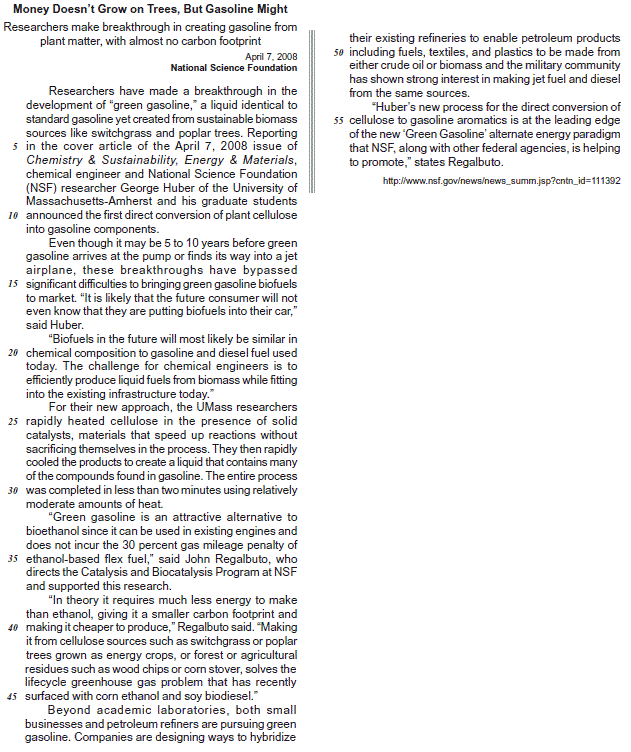 The text says that research on green gasoline has
The text says that research on green gasoline has
- A. had no printed space in scientific journals.
- B. not received support from scientific foundations.
- C. found no interest among the military and the businessmen.
- D. been neglected by academic laboratories and graduate research programs.
- E. had to overcome problems to discover an efficient means of producing and marketing this fuel.
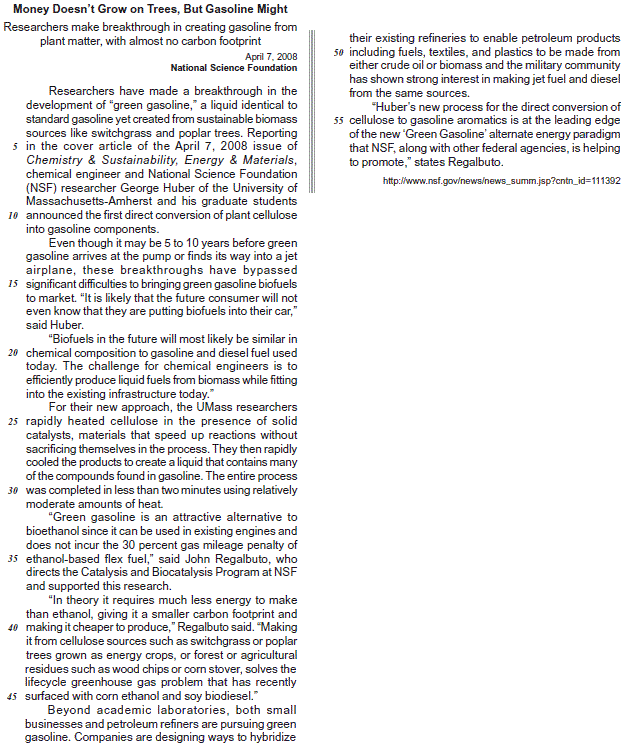 The title of the text, Money Doesnt Grow on Trees, But Gasoline Might, refers to the
The title of the text, Money Doesnt Grow on Trees, But Gasoline Might, refers to the
- A. planting of trees near oil wells that produce gasoline.
- B. exciting possibility of developing an effective green fuel.
- C. amazing solution of diluting gasoline with forest and agricultural residues.
- D. incredible discovery of trees that produce more when irrigated with a mixture of gasoline.
- E. sensational invention of new green fuel that will cost three million dollars in reforestation.
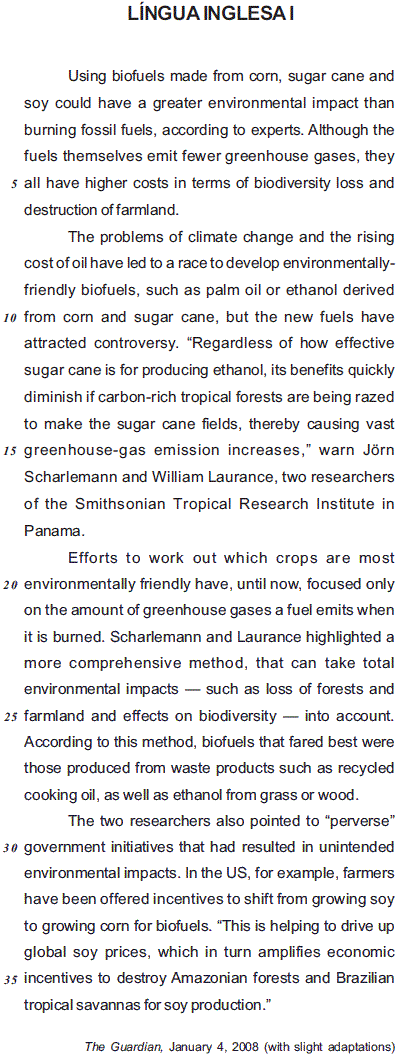
A correct correspondence between pronoun and referent is expressed in
- A.
themselves (line 4) - experts (line 3).
- B.
they (line 4) - greenhouse gases (line 4).
- C.
those (line 27) - biofuels (line 26).
- D.
This (line 33) - growing soy (line 32).
- E.
which (line 34) - prices (line 34).

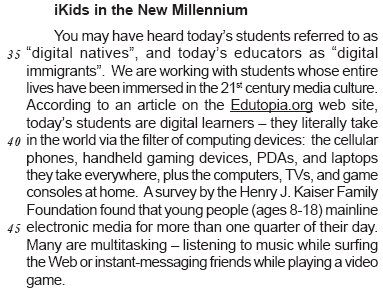
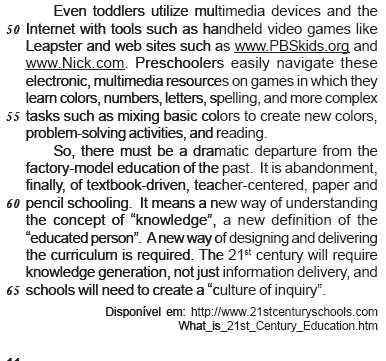
- A. use of handheld gaming devices and sites such as Edutopia.org in schools.
- B. decadence of the world's societies in sixty years, when today's kindergarteners will be retiring.
- C. emergence of new forms of energy, advances in medicine and means of communication.
- D. unlimited possibilities of globalization and emerging technologies that make the world a better place.
- E. importance of developing innovative educational strategies to meet the needs of the students in the new century.

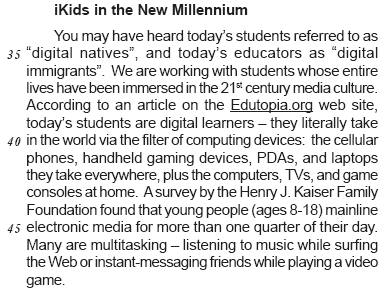
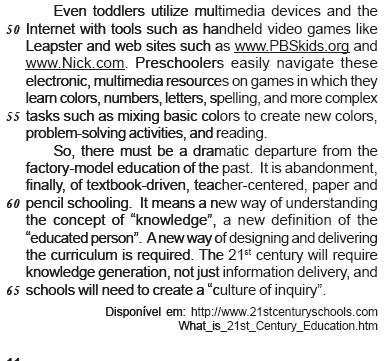
- A. cannot change the way people live nowadays.
- B. can mark the transition from an oral to a print culture.
- C. has been unprecedented in the history of human societies.
- D. will only bring negative consequences to the future generations.
- E. will be less important to mankind than the invention of the printing press.

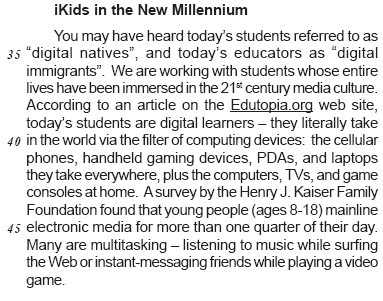

- A. emerging technologies that will have a huge impact on today's society.
- B. social, economical and political problems that were solved locally in the past.
- C. needs students have to communicate, function and innovate in the world of today.
- D. importance of participating in real-life, real-world service learning projects that will make the world a better place
- E. problems found in the contemporary world, such as global warming, famine, poverty and population explosion.


